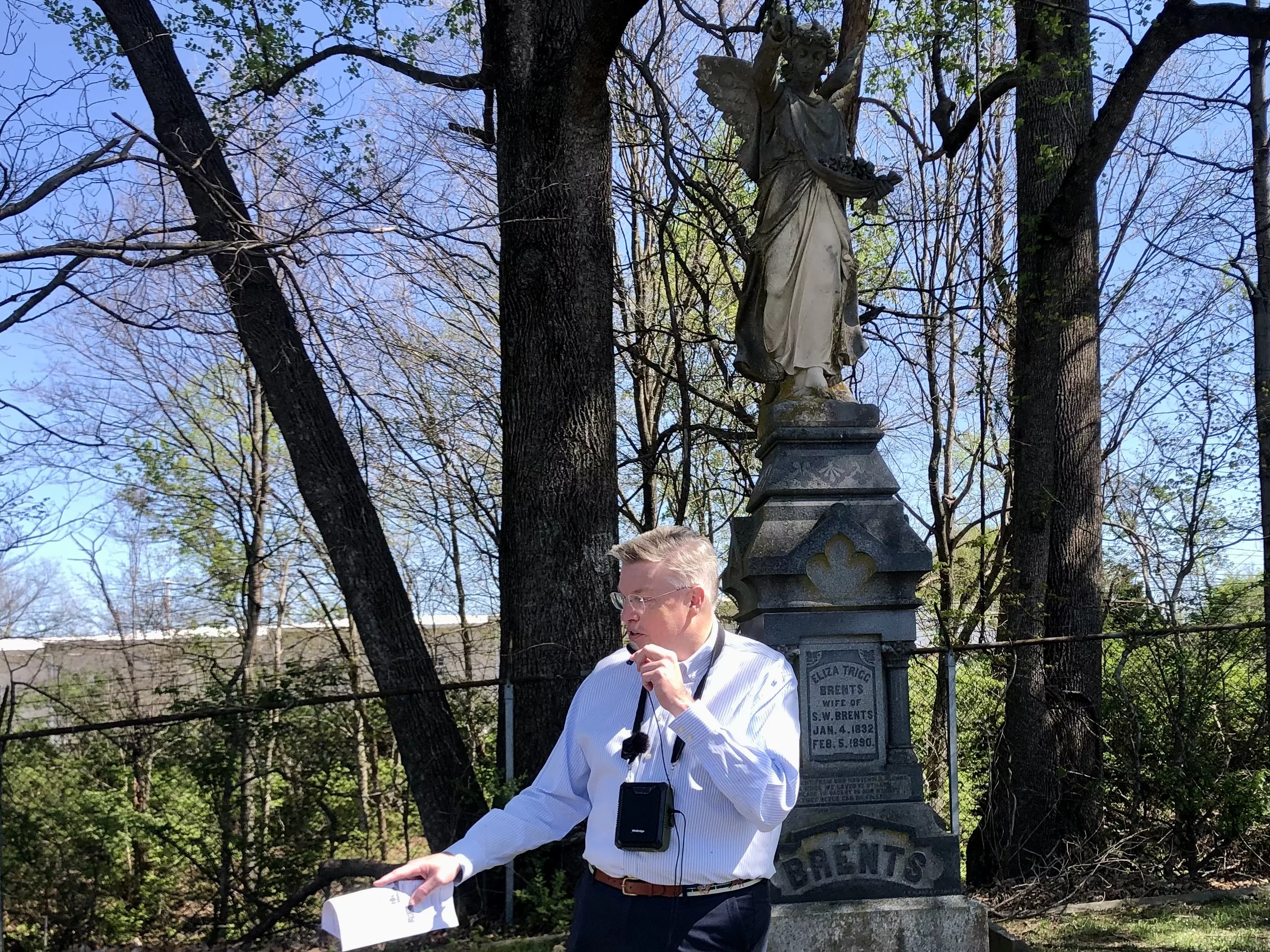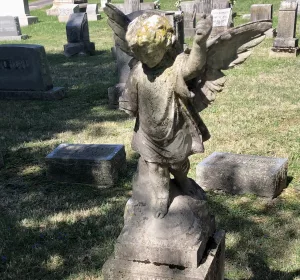


She died young and her distraught husband left money for a substantial monument to be erected and the lot to be cared for in perpetuity. Carden’s nephew and namesake, Lucian Carden Preston, (buried in the neighboring lot) was the trustee and overseer. The likeness of Ella was noted by her contemporaries as being extremely lifelike. The detail on the monument is outstanding, with Terry calling special attention to the detail of the “fabric” adorning the bust.
Terry spoke at length about many families, but one in particular, was the Depp family, had placed a stone near their family plot to indicate that African American enslaved by the family were buried in that spot, which is contradictory to a rumor that no person of African descent was buried at the municipal cemetery, as Terry explains.





